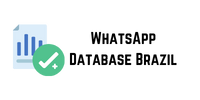This type of spam is usually content creat by programs or algorithms that produce text without human intervention, commonly known as AI ( Artificial Intelligence ). The goal of this strategy is to flood the web with large amounts of content in an attempt to improve search engine rankings. However, this type of content provides no real value to users and is often incoherent or repetitive.
Keyword stuffing
This tactic consists of stuffing content with relevant keywords in a forc and repetitive manner, without allowing them to be integrat naturally into the text. While this technique could help improve search engine rankings in the past, Google now severely penalizes keyword stuffing, as it deteriorates the user experience.
Duplicate or plagiariz content
Duplicate content occurs when information is copi whatsapp number list from other pages without adding any additional value or originality. This can be through direct plagiarism or simply reusing articles without attribution. Google prioritizes original content and may penalize sites that replicate content without any input.
Deceptive or malicious links
Another practice not recommend by Google is the use of misleading or low-quality links , which can also lead to content being consider spam. This includes the practice of “hiding” links in the text or rirecting users to irrelevant or malicious sites. Additionally, links to sites with a bad reputation can also be view negatively by Google bots.
Tools to detect and prevent spam in your content
To ensure your content is consider useful and not spam , it’s essential that you use tools that help you monitor, evaluate, and improve the quality of your site’s content. Both Google and other third-party services offer tools specifically design for this purpose, including the following:
Google Search Console
To kick off the list, we’ll start with Google Search Console (GSC) , a free tool offer by Google. It allows website owners to monitor how their site is being index in search results. It also provides alerts about spam issues or penalties that may be affecting the site’s performance. Among its key features, it’s worth highlighting:
- Monitor search performance.
- Detect indexing issues and potential aero leads penalties for unwant content.
- Obtain data about site traffic and user behavior.
Google Analytics
Google Analytics (currently known as GA4 ) qualified leads what they are and how to get is another powerful tool that allows you to analyze user behavior on your site. If you notice very high bounce rates or rapid user exit, this may be a sign that your content isn’t offering value or is being perceiv as spam. The main insights this tool can offer are.
